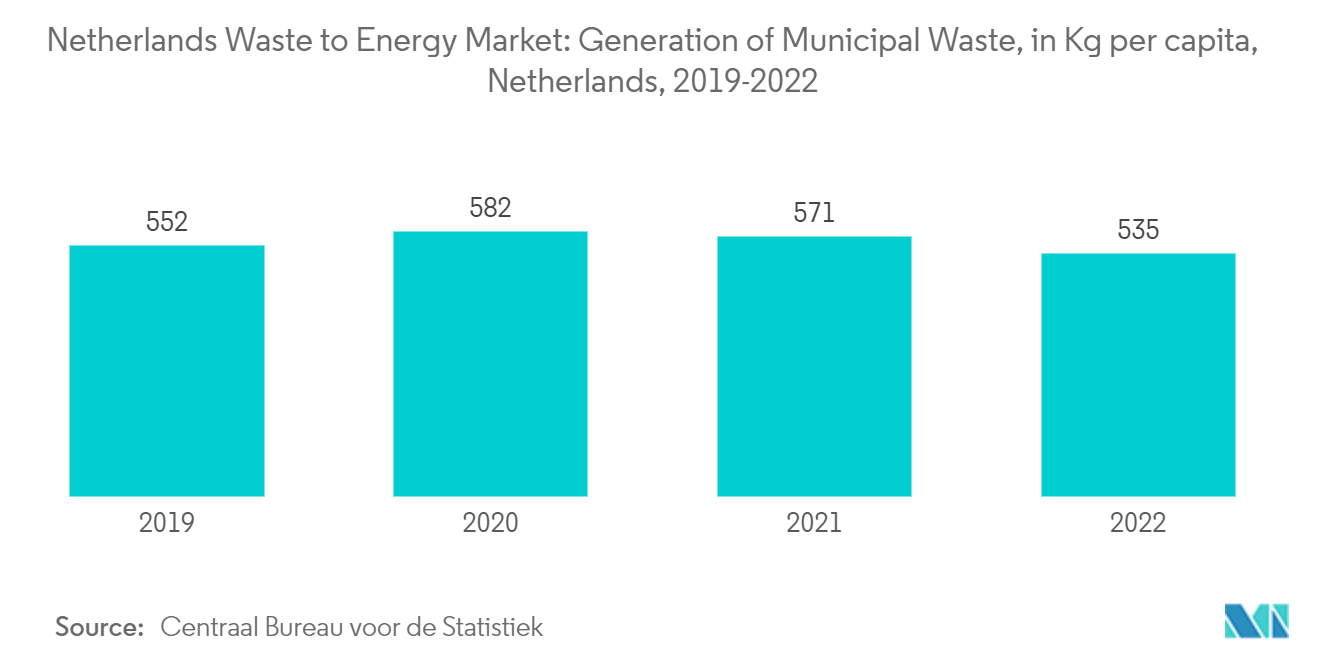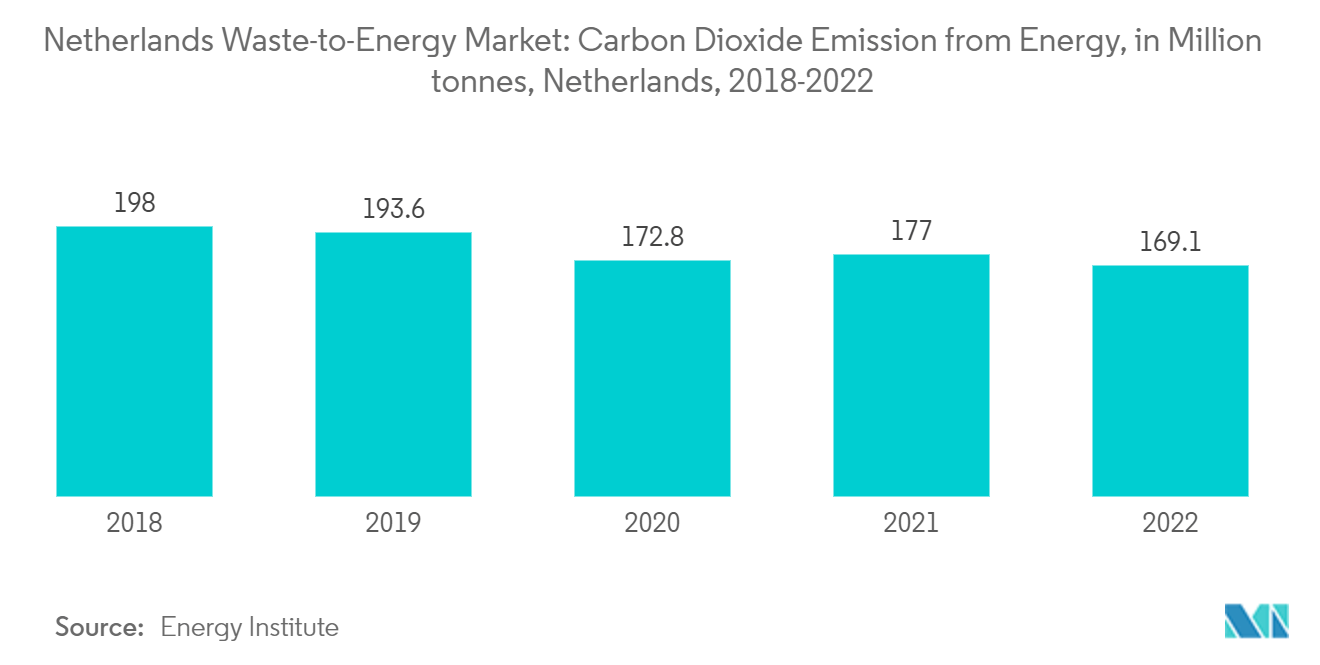Market Trends of Netherlands Waste To Energy Industry
Thermal Technologies Segment to Dominate the Market
- The Netherlands is small in area but significant in agricultural output. It is second only to the United States in the value of its agricultural work. As of 2022, it had 17.5 million people, which generated about 535 kg of waste per capita.
- In the Netherlands, waste-to-energy plants incinerate residual household and similar waste that cannot be reused or recycled, which is economically and environmentally beneficial. They are cost-effective and reliable energy sources for electricity, district heating or cooling, and industrial processes. The heat and electricity delivered to housing and industry reduce the use of fossil fuels in conventional power plants. Waste-to-energy plants, therefore, help to reduce CO2 emissions.
- The Netherlands needs more landfill capacity and thermal treatment capacity. This has urged a change in waste management policy, with the following results: The amount of waste landfill decreased from 35% in 1985 to less than 2% in 2018. The recovery rate (including waste-to-energy) rose from 50% to 93%, and more and more waste was collected separately. As of 2022, nearly 80% of the country's waste is recycled, and residual waste is mainly used for energy production.
- It is estimated that plants that utilize thermal power cogeneration (heating and cooling) and electricity generation can reach optimum efficiencies of 80%. In the present scenario, incineration is the most well-known waste-to-energy technology for municipal solid waste (MSW) processing. However, waste-to-energy technologies, particularly combustion, produce pollution and carry potential health and safety risks.
- Therefore, due to the above points, the thermal technology segment is expected to dominate the Dutch waste-to-energy market during the forecast period.

Government Policies and Increasing Investments Driving the Market Demand
- It took the Netherlands about 40 years to get their waste per person down from an estimated 500 kilograms to a relatively low 21 kilograms in some areas. It results from many government policies and methods for handling municipal trash.
- By 2050, the Dutch government aims to have a circular economy. The government has developed several initiatives to attract investments in the waste-to-energy sector to increase the overall recycling rate.
- Most waste is processed differently, such as through recycling and composting waste and combustion for power generation. The Netherlands is famous for having one of Europe's highest recycling rates of all material waste, at about 79% yearly. As of 2022, nearly 80% of municipal waste was recycled in the country. The residual waste was mainly used for energy production through 13 waste incinerators in the Netherlands.
- The SDE++ 2021 round was held in the Netherlands in 2021, and it cost 5 billion euros to do so.SDE++ stands for sustainable energy production and climate transition. It is a subsidy scheme introduced for renewable energy producers and also for CO2 reduction techniques that are available for waste-to-energy market players.
- Furthermore, the Dutch government charges a landfill tax, which is aimed at helping achieve the shift toward less landfilling and more recovery and recycling of waste. The increasing use of waste-to-energy processes burns waste to produce heat or electricity. This reduced the greenhouse gas emissions in the environment. In 2022, nearly 169.1 million tons of carbon dioxide emission will be generated from energy, decreasing from 177 million tons in 2021.
- Hence, due to the above points, supportive government policies and increasing investments in the country are expected to drive the Netherlands' waste-to-energy market during the forecast period.

